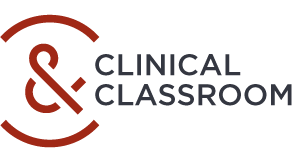JBJS Clinical Classroom is an adaptive learning system that observes what and how a person learns and tailors their experience to fill specific knowledge gaps. Unlike pure question-bank study tools, which present users with essentially undifferentiated experiences, JBJS Clinical Classroom emphasizes each individual user’s mastery of the information. It quickly identifies their strengths and weaknesses and:
- Helps them to understand what they know AND what they don’t know
- Zeroes in on the learning objectives they find most challenging
- Reinforces information they have already mastered but might be starting to forget
As such, adaptive learning enables users to spend up to 50% less time learning the same materials presented through more traditional e-learning methods.
Before answering a question in JBJS Clinical Classroom, learners must assess their confidence in selected answers. The choices are:
The Clinical Classroom algorithm then looks at:
- Correctness/incorrectness of the answer chosen
- The learner’s self-reported confidence level
- How much time it took them to answer
Where mastery is deemed low, JBJS Clinical Classroom then presents valuable learning resources and directs learners toward the subjects in which they are weak and away from subjects in which they are already proficient. It adapts continually over time as the user continues to learn.
JBJS Clinical Classroom also enables learners to estimate their overall competence in each subspecialty area and adjust their learning pathways accordingly. If they choose,
- Novice: the platform presents foundational learning resources plus questions aimed at establishing core knowledge
- Competent: presents a balance of learning resources and relevant questions
- Expert: presents only questions
JBJS has recruited experts with 15+ years in their respective orthopaedic subspecialties to develop learning objectives based on essential knowledge needed during residency and practice, such as:
- Demonstrate an increased knowledge of general and subspecialty orthopaedic topics
- Demonstrate improved ability to make clinical decisions that provide safe and effective patient care
- Identify areas of personal strength and areas for needed growth in orthopedic knowledge
Platform authors then develop specific questions that:
- Test the various learning objectives
- Provide learning resources with supporting information for answering questions correctly
- Link references for additional information
All questions and learning resources are peer-reviewed by multiple subspecialty experts, and the platform is updated bi-weekly to:
- Add new learning objectives and questions
- Review and remove content that is no longer current
Accreditation
The Journal of Bone and Joint Surgery, Inc. is accredited by the Accreditation Council for Continuing Medical Education to provide continuing medical education for physicians.
AMA credit designation statement
The Journal of Bone and Joint Surgery designates this enduring online activity for 1 AMA PRA Category 1 Credits™ for ever six correctly answered questions. Physicians should only claim credit commensurate with the extent of their participation in the activity.
ABOS Maintenance of Certification Self-Assessment Examination (SAE) credits
This activity has been approved by the ABOS for scored and recorded self-assessment examination (SAE) Credits. You can receive 10 SAE credits for each 100 questions answered.
Relevant financial relationships
No relevant financial relationships have been identified.
